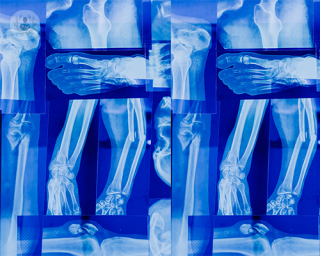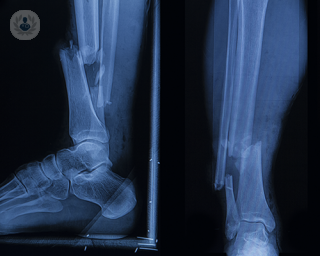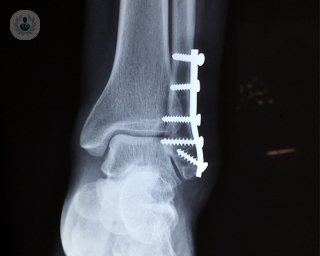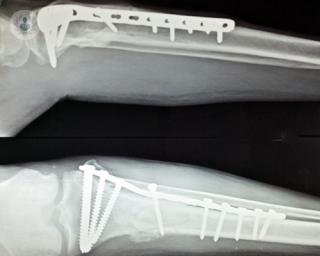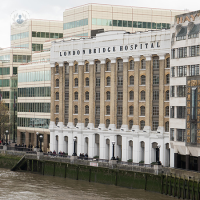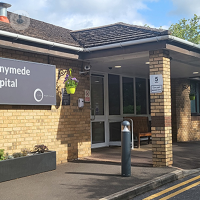Fracture
Professor Mohamed Imam - Orthopaedic surgery
Created on: 07-30-2019
Updated on: 04-20-2023
Edited by: Karolyn Judge
What is a fracture?
A fracture is the medical term for a broken bone.
There are many different kinds of fracture; the type often depends on the severity of the cause. The break may be total or partial. If the force of the trauma only slightly exceeded the breaking point, the bone may merely crack. However, in the case of extreme force, such as in a road traffic accident, the bone may be shattered. If the broken bone then punctures the skin, this is known as a compound fracture or open fracture.

What are the types of fracture?
There are various ways to classify types of fracture, including by mechanism (e.g. trauma or pathology), by anatomy (i.e. location in the body – rib fracture, arm fracture, etc), by fracture pattern (e.g. transverse), or by whether or not the soft tissue is also damaged (i.e. open or closed fractures).
Examples of types of fracture that you may have heard of include:
- Stress fracture - tiny cracks in the bone, usually caused by overuse or repetitive force.
- Osteoporotic fracture - result from osteoporosis, which is a condition that causes the bones to weaken and become fragile.
- Stable fracture – the broken pieces of bone barely move out of place, with the ends lined up in the correct position to heal. They do not require realignment.
- Compound fracture (open fracture) – the fractured bone pierces the skin, causing a wound and increasing the likelihood of infection. The broken pieces of bone must be realigned and the wound closed.
- Transverse fracture – the fracture is horizontal, i.e. at right-angles to the long axis of the bone.
- Oblique fracture – the fracture is diagonal (at an angle of more than 30°).
- Incomplete fracture – the bone is cracked, but not completely separated.
- Complete fracture – the bone is completely broken.
- Comminuted fracture – the bone shatters into three or more pieces.
Read more about fractures in different parts of the body here:
- Skull fracture
- Shoulder fracture
- Fractured humerus
- Elbow fracture
- Wrist fracture
- Spine fracture
- Hip fracture
- Fractured femur
- Knee fracture
- Ankle fracture
Are fractures painful?
Yes. When most fractures happen, intense pain is experienced initially. You may also feel dizzy or feel chills from shock.
The pain may become worse when you move or if you touch the area that's injured.
Which is the most serious kind of fracture?
A compound fracture, which is also known as an open fracture, is one of the most severe types of fracture. It is when the bone pierces the skin when the fracture occurs. Due to the severity and risk of infection, surgery is usually required.
What causes fractures?
The main cause of fractures is trauma, i.e. a hard, physical impact. Common causes of trauma sufficient to break a bone include:
- Falls
- Road accidents
- Incidents in sports, e.g. rough tackles

Other factors that can make bones more susceptible to fracture include low bone density and osteoporosis, both of which weaken the bones. Routinely overloading your bones can also lead to stress fractures (very small cracks).
How long does a fracture take to heal?
Depending on the severity of the fracture, it can take anything from several weeks to many months to heal. Patients should adhere to their doctors’ advice as to when and how they should approach returning to normal activity, as the pain usually stops before the bones have fully recovered their strength, leading to a false sense of confidence. Also, the muscles in the immobilised area tend to lose strength during the recovery period, and may require rehabilitation.
Your healthcare provider will provide you with items required during this time to make healing more comfortable and allow mobility, like a sling, crutches or wheelchair. You'll be given instructions about how to safely use any equipment you've been provided.
Can fractures be prevented?
There is no sure-fire way to prevent a fracture, but you can reduce your risk.
- Vitamin D and calcium contribute to bone strength. If you do not get enough in your diet, consider taking supplements.
- Take precautions while driving – wear a seatbelt and make an effort to remove distractions, such as mobile phones.
- Try to prevent falls at home by keeping the floor clear, making sure stairways are well-lit, and installing handrails by the bath to help prevent slipping and falling.
How are fractures treated?
In terms of treatment, fractures must be reset so that the bone can heal and the pieces can fuse back together. In many cases, the bones must first be realigned (reduction) before the healing process can begin. These are different ways to accomplish this, depending on the severity of the break:
- Immobilisation – the most common form of fracture treatment involves a cast or brace to keep the broken bones from moving while they heal.
- External fixation – metal screws or pins are placed on either side of the fracture and attached to a bar outside the body, providing a frame to hold the bones in place so they can heal.
- Internal fixation – the bone fragments are repositioned first, and then metal devices, such as screws and plates are implanted directly onto the bones to hold them in place. Alternatively, rods can be placed through the marrow in the middle of the bones.
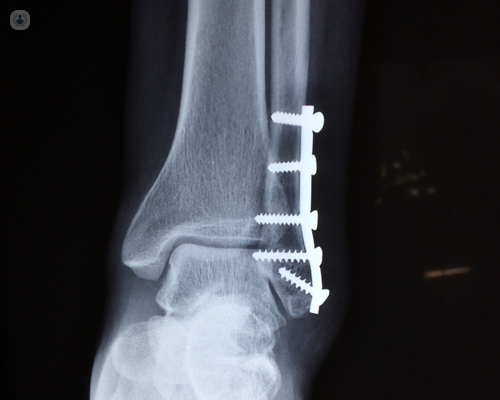
Which type of specialist treats fractures?
Orthopaedic surgeons, particularly those specialising in trauma, treat fractures.

